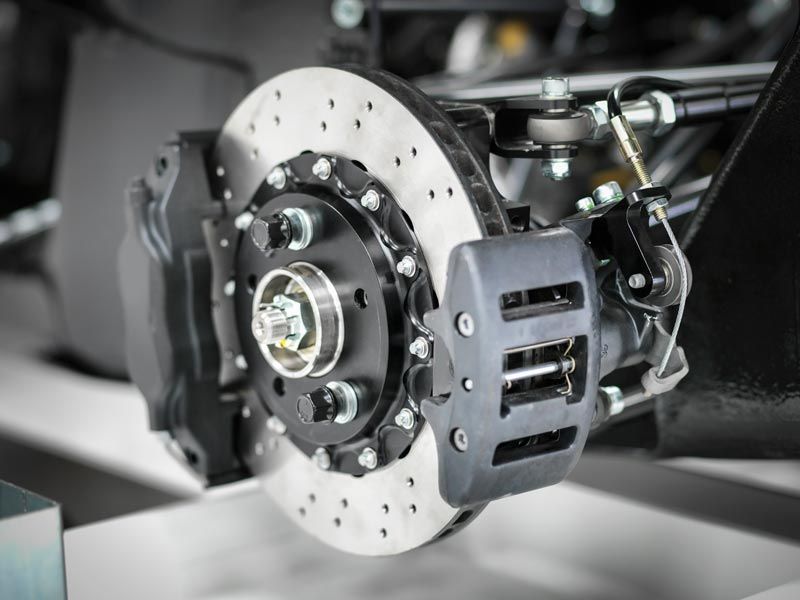MATLAB and Simulink enable automotive engineering organizations to accelerate vehicle development processes and to deliver vehicles that meet market requirements for safety, comfort, fuel economy, and performance.
Automotive engineers use MATLAB and Simulink to:
- Run simulations to evaluate trade-offs and optimize designs
- Develop and test perception, planning, and control algorithms
- Validate requirements early through rapid prototyping
- Generate code for prototyping or production, in floating or fixed-point, for MCUs, GPUs, SoCs and FPGA devices
- Analyze test fleet and production vehicle data
- Comply with AUTOSAR and ISO 26262 standards
“Simulink is particularly helpful in two stages of our development process. Early on, it helps us try new ideas and visualize how they will work. After generating code and conducting in-vehicle tests, we can run multiple simulations, refine the design, and regenerate code for the next iteration.”
Jonny Andersson, Scania

Using MATLAB for Automotive
Automated Driving and Advanced Driving Assistance Systems (ADAS)
Use MATLAB and Simulink to accelerate the development of automated driving functions including perception, planning, and control functions. Run simulations in Simulink to test, integrate, and tune these functions using programmatically generated scenes and maximize test coverage across various road, traffic, and environmental conditions without expensive prototype vehicles.

AI in Automotive Engineering
Use MATLAB to access and preprocess fleet and vehicle data, build machine learning and predictive models, and deploy models to enterprise IT systems. With MATLAB you can access data stored in files, databases, and the cloud. It helps in exploring modeling approaches using machine learning and deep learning apps and to accelerate algorithms with parallel processing on CPUs, NVIDIA® GPUs, the cloud, and datacenter resources. Automatic conversion of machine learning models to C/C++ code and deep learning models to CUDA® code helps in deployment of trained models or networks to production IT systems, without recoding into another language.
Customer Stories
AUTOSAR
MathWorks is an AUTOSAR Premium Member and actively participates in the development of the standard with focus on the complete application of Model-Based Design with an AUTOSAR development process. Use Simulink and AUTOSAR Blockset to design and simulate Classic and Adaptive AUTOSAR systems. Then use Embedded Coder to generate AUTOSAR code in C for Classic or C++ for Adaptive. Composition authoring with System Composer, as well as, round-trip ARXML-based integrations are supported.
Customer Stories
- Vertical AUTOSAR System Development at John Deere (18:34) (PDF)
- Fiat Chrysler Automobile Leverages Model-Based Design, Automatic Code Generation, and AUTOSAR to Architect and Implement an Engine Control Application for Series Production
- Model-Based Software Development: An OEM’s Perspective (24:55) (PDF)
Explore Products
Learn More

ISO 26262
Use MATLAB and Simulink with a reference Model-Based Design workflow to achieve the process rigor imposed by ISO 26262, a functional safety standard. Embedded Coder, Simulink model verification tools, and Polyspace® code verification tools are pre-qualified by TÜV SÜD according to ISO 26262 for ASIL A-D. The qualifications are based on an automated, application-specific verification workflow. It supports back-to-back model and code testing. In addition to C code generation, Embedded Coder ISO 26262 tool qualification use cases include its AUTOSAR and C++ code generation capabilities.
Electrified Vehicles
With Model-Based Design, you can use simulations to perform electric powertrain architecture trade-off studies and to size key components such as the battery pack and traction motor, before building prototype vehicles. Use rapid control prototyping, model verification, and production code generation to move quickly from concept to prototype to production for key controllers for electrified vehicles, including the vehicle control unit (VCU), Electrification, and battery management system (BMS).

Related Applications and Topics

Contact Sales
Get started



